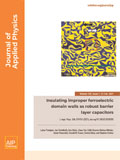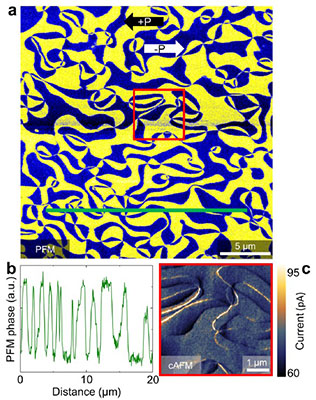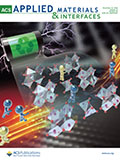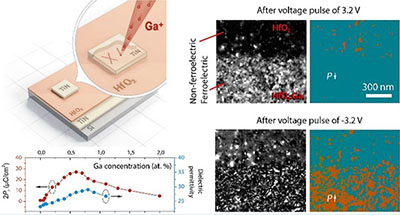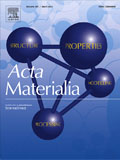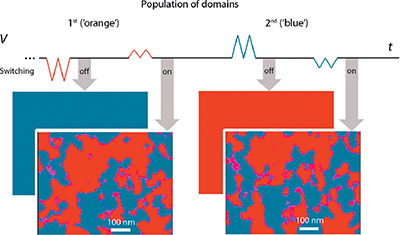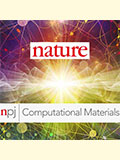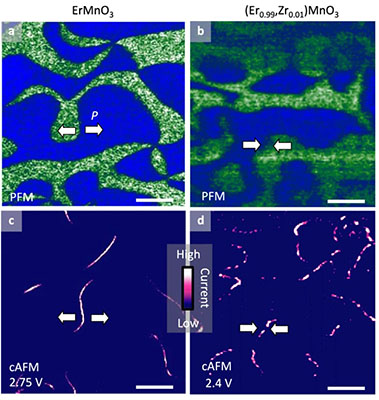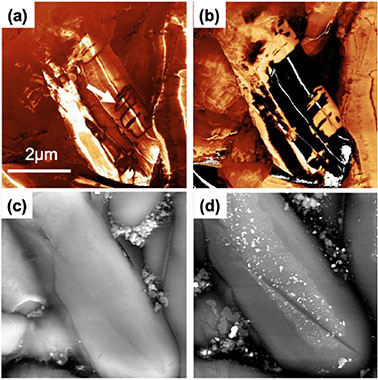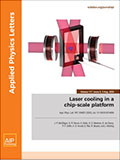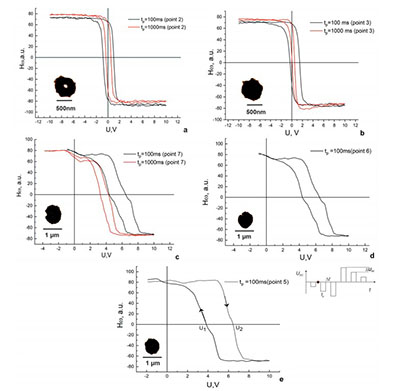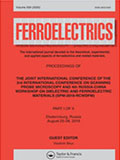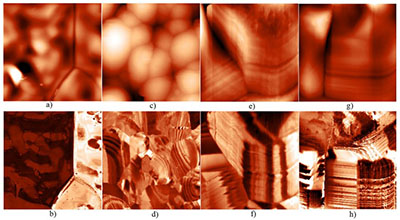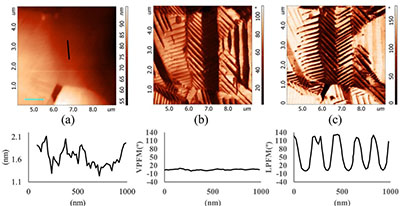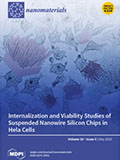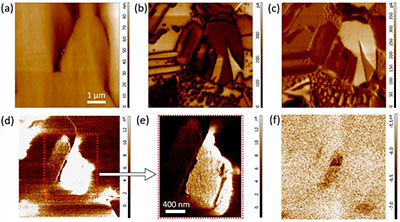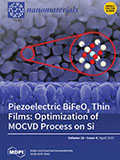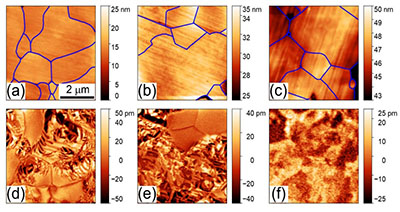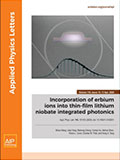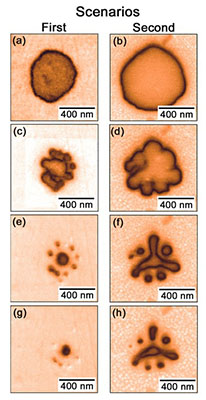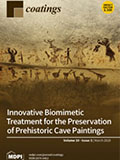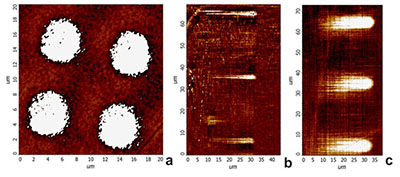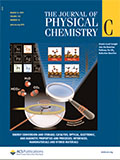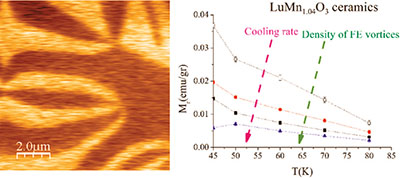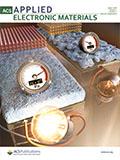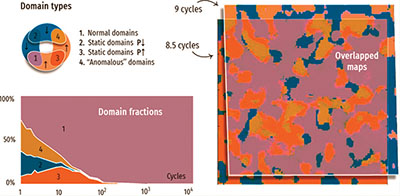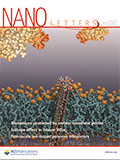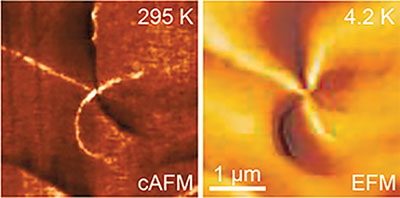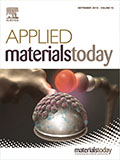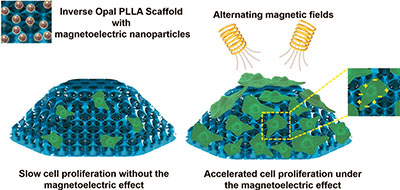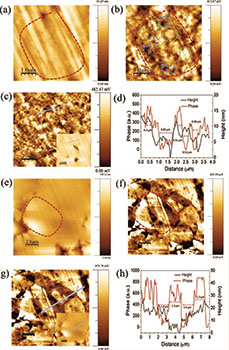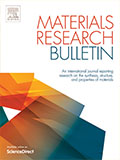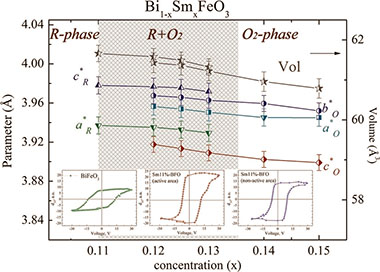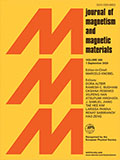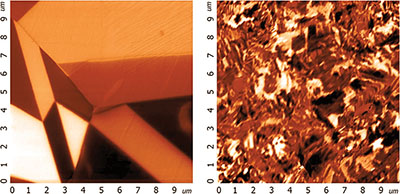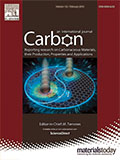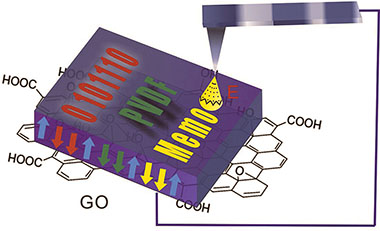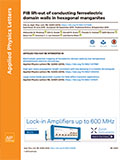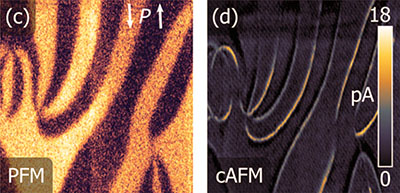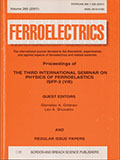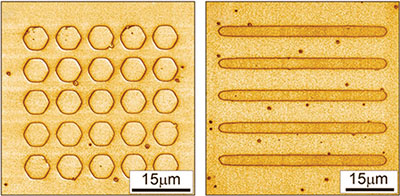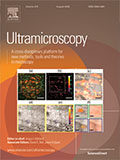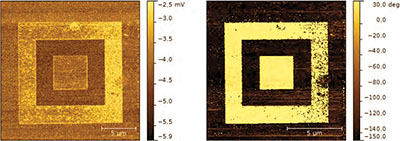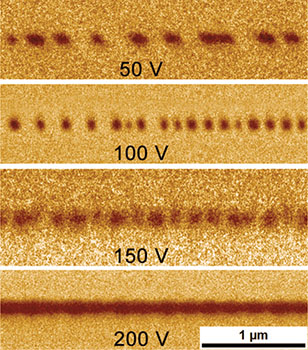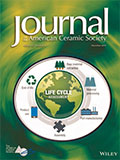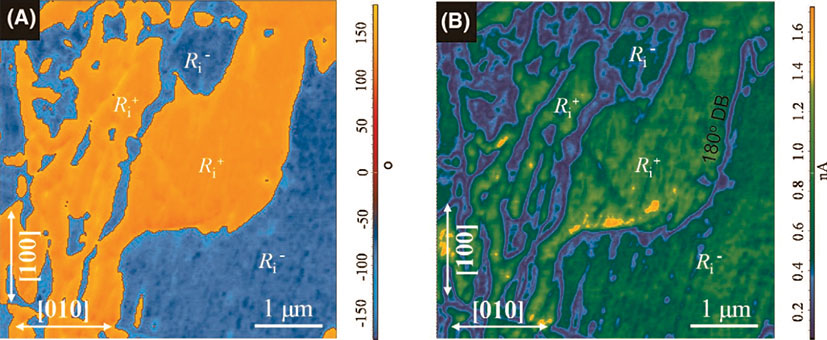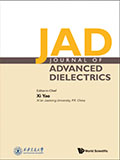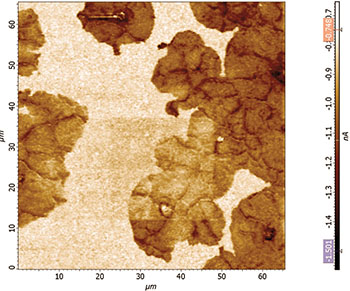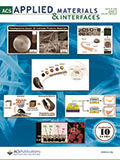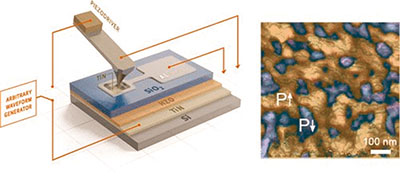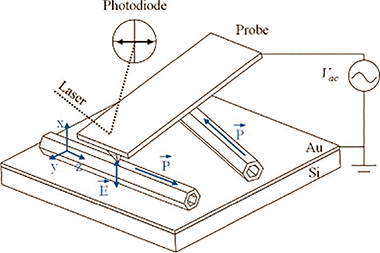Piezoresponce Force Microscopy (PFM) is an AFM mode which probes the mechanical deformation of a sample in response to an electric field which is applied between tip and sample. It allows to visualize ferroelectric domains, perform direct measurement of piezoelectric coefficients, study the dynamics of domain walls, etc. with high spatial resolution. These studies are essential for understanding the nature of new functional materials and devices for optoelectronics, data storage, medical diagnostics, actuators, etc.
In this scientific digest we present the collection of most remarkable works done by the world leading scientific groups during last two years in the field of PFM with the help of our instrumentation.
Download your personal PDF copy
Insulating improper ferroelectric domain walls as robust barrier layer capacitors
Lukas Puntigam, Jan Schultheiß, Ana Strinic, Zewu Yan, Edith Bourret, Markus Altthaler, Istvan Kezsmarki,Donald M. Evans, Dennis Meier, and Stephan Krohns
Journal of Applied Physics 129, 074101 (2021)
https://doi.org/10.1063/5.0038300
We report the dielectric properties of improper ferroelectric hexagonal (h-)ErMnO3. From the bulk characterization, we observe a temperature and frequency range with two distinct relaxation-like features, leading to high and even “colossal” values for the dielectric permittivity. One feature trivially originates from the formation of a Schottky barrier at the electrode–sample interface, whereas the second one relates to an internal barrier layer capacitance (BLC). The calculated volume fraction of the internal BLC (of 8%) is in good agreement with the observed volume fraction of insulating domain walls (DWs). While it is established that insulating DWs can give rise to high dielectric constants, studies typically focused on proper ferroelectrics where electric fields can remove the DWs. In h-ErMnO3, by contrast, the insulating DWs are topologically protected, facilitating operation under substantially higher electric fields. Our findings provide the basis for a conceptually new approach to engineer materials exhibiting colossal dielectric permittivities using domain walls in improper ferroelectrics.
Nanoscale Tailoring of Ferroelectricity in a Thin Dielectric Film
New opportunities in the development and commercialization of novel photonic and electronic devices can be opened following the development of technology-compatible arbitrary-shaped ferroelectrics encapsulated in a passive environment. Here, we report and experimentally demonstrate nanoscale tailoring of ferroelectricity by an arbitrary pattern within the nonferroelectric thin film. For inducing the ferroelectric nanoregions in the nonferroelectric surrounding, we developed a technology-compatible approach of local doping of a thin (10 nm) HfO2 film by Ga ions right in the thin-film capacitor device via focused ion beam implantation. Local crystallization of the doped regions to the ferroelectric structural phase occurs during subsequent annealing. The remnant polarization of the HfO2:Ga regions reached 13 μC/cm2 at a Ga concentration of 0.6 at. %. Piezoresponse force microscopy over the capacitor device revealed an asymmetrical switching of ferroelectric domains within written HfO2:Ga patterns after capacitor switching, which was attributed to the mechanical stress across the doped film. The lateral spatial resolution of ferroelectricity tailoring is found to be ~200 nm, which enables diverse applications in switchable photonics and microelectronic memories.
Origin of the retention loss in ferroelectric Hf0.5Zr0.5O2-based memory devices
Anastasia Chouprik, Ekaterina Kondratyuk, Vitalii Mikheev, Yury Matveyev, Maxim Spiridonov, Anna Chernikova, Maxim G.Kozodaev, Andrey M.Markeev, Andrei Zenkevich, Dmitrii Negrov
Acta Materialia (2020)
https://doi.org/10.1016/j.actamat.2020.116515
For the decade, ferroelectric hafnium oxide films are attracting the interest as a promising functional material for nonvolatile ferroelectric random access memory due to full scalability and complementary metal-oxide-semiconductor integratability. Despite the significant progress in key performance parameters, particularly, the readout charge and voltage as well as the endurance, the developed devices can only be implemented by the electronics industry if they exhibit a standard retention time of 10 years. Material engineering modifies not only target ferroelectric properties, but also the retention time. To understand how to maintain the sufficient retention, the physical mechanism behind it should be clarified. For this purpose, we have fabricated the capacitor memory cell with a high rate of retention loss. Comparing the device performance with the results of capacitance transient spectroscopy, operando hard X-ray photoelectron spectroscopy and in situ piezoresponse force microscopy, we have concluded that the retention loss is caused by the accumulation of the positively charged oxygen vacancies at the interfaces with capacitor electrodes. The redistribution of charges during long-term storage of information is fully defined by the domain structure in memory cell.
Application of a long short-term memory for deconvoluting conductance contributions at charged ferroelectric domain walls
Ferroelectric domain walls are promising quasi-2D structures that can be leveraged for miniaturization of electronics components and new mechanisms to control electronic signals at the nanoscale. Despite the significant progress in experiment and theory, most investigations on ferroelectric domain walls are still on a fundamental level, and reliable characterization of emergent transport phenomena remains a challenging task. Here, we apply a neural-network-based approach to regularize local I(V)-spectroscopy measurements and improve the information extraction, using data recorded at charged domain walls in hexagonal (Er0.99,Zr0.01)MnO3 as an instructive example. Using a sparse long short-term memory autoencoder, we disentangle competing conductivity signals both spatially and as a function of voltage, more accurate analysis compared to a standard evaluation of conductance maps. The NN-based analysis allows us to isolate extrinsic signals that relate to the tip-sample contact and separating them from the intrinsic transport behavior associated with the ferroelectric domain walls in (Er0.99,Zr0.01)MnO3. Our work expands machine-learning-assisted SPM studies into the realm of local conductance measurements, improving the extraction of physical conduction mechanisms and separation of interfering current signals.
Influence of orientation and ferroelectric domains on the photochemical reactivity of La2Ti2O7
The effects of crystal orientation and ferroelectric domain structure on the photochemical reactivity of La2Ti2O7 have been measured. Electron backscattered diffraction was used to determine the orientations of the surfaces of crystals in a ceramic specimen, piezo-force microscopy was used to determine the domain structure, and the photocathodic reduction of silver from an aqueous silver nitrate solution was used to evaluate the photochemical reactivity. The reactivity is greatest on (001) surfaces (this is the orientation of the layers in this (110)p layered perovskite structure) while surfaces perpendicular to this orientation have the least reactivity. Complex domain structures were observed within the grains, but they appeared to have no effect on the photocathodic reduction of silver, in contrast to previous observations on other ferroelectrics. La2Ti2O7 is an example of a ferroelectric oxide in which the crystal orientation has a greater influence on the photochemical reactivity than polarization from the internal domain structure.
Anomalous domains formed under AFM-TIP voltages in Sr0.61Ba0.39Nb2O6 crystals and their suppression
Submicro- and nanosized domain patterns are demanded by various applications. The most attractive method for fabrication of structures of these scales is the domain writing by an AFM-tip voltage Utip. The use of this method is limited by the appearance of so-called anomalous domains, in which a small area under the tip is polarized oppositely to the poling field. We present the studies of anomalous domains in zero-field cooled (ZFC) and field cooled Sr0.61Ba0.39Nb2O6 crystals. A correlation between the spatial distribution of the domain shape and the bias Ub of local hysteresis loops was found in ZFC crystals, namely, in the points with a larger Ub the anomalous domains appeared at higher Utip. Based on this correlation, we managed to prevent the formation of anomalous domains by a strong preliminary poling of the crystal resulting in an essential increase in Ub all over the bulk. The dependences of the domain diameter D on Utip and the exposure time tp are described by the unique linear and power D~tpk functions, respectively. These dependences are not affected by the appearance of an anomalous region growing with Utip and tp.
Growth features of grains in ceramics based on titanates and niobates of alkali and alkaline earth metals
Grain size and shape, their uniformity, duration and properties of grain boundaries, and pores play important role in piezoceramics properties. Therefore, it is important to study the features of grain structure and the regularities of grain growth when searching for lead-free materials capable of replacing PZT. Current work presents the results of research of the grains surfaces piezoelectric ceramics with ABO3 composition using scanning electron microscopy and atomic force microscopy. The dependences of the shape and size of the grains on the cation in position A are detected. Growth steps are observed on the surface of the grains. Domain walls on such grains are perpendicular to the growth steps.
Piezoresponse force microscopy and electron backscattering diffraction of 90° ferroelectric twins in BaTiO3 positive temperature co-efficient thermistors
The positive temperature co-efficient (PTC) of resistivity
in BaTiO3 is a grain boundary effect, where the resistivity increases by several orders of magnitude near the transition temperature from ferroelectric (tetragonal) to paraelectric (cubic) phase. We combine electron backscatter diffraction (EBSD) and piezoresponse force microscopy (PFM) to investigate the crystallographic orientation, topography, and intergranular polarization in polycrystalline PTC BaTiO3 ceramics leading to PTC effect. EBSD study showed that while macroscale BaTiO3 displayed no overall preferential crystallographic orientation, individual grains had preferred orientations at a localized level. Twinning patterns were revealed by EBSD and PFM images showing classical 90℃ ferroelectric domain patterns.
Investigation of Local Conduction Mechanisms in Ca and
Ti-Doped BiFeO3 Using Scanning Probe Microscopy Approach
Maxim S. Ivanov, Vladimir A. Khomchenko, Maxim V. Silibin, Dmitry V. Karpinsky, Carsten Blawert, Maria Serdechnova and José A. Paixão
Nanomaterials 2020, 10, 940
https://doi.org/10.3390/nano10050940
In this work we demonstrate the role of grain boundaries and domain walls in the local transport properties of n- and p-doped bismuth ferrites, including the influence of these singularities on the space charge imbalance of the energy band structure. This is mainly due to the charge accumulation at domain walls, which is recognized as the main mechanism responsible for the electrical conductivity in polar thin films and single crystals, while there is an obvious gap in the understanding of the precise mechanism of conductivity in ferroelectric ceramics. The conductivity of the
Bi0.95Ca0.05Fe1−xTixO3−δ (x=0, 0.05, 0.1; δ=(0.05−x)/2) samples was studied using a scanning probe microscopy approach at the nanoscale level as a function of bias voltage and chemical composition. The obtained results reveal a distinct correlation between electrical properties and the type of charged defects when the anion-deficient (x=0) compound exhibits a three order of magnitude increase in conductivity as compared with the charge-balanced (x=0.05) and cation-deficient (x=0.1) samples, which is well described within the band diagram representation. The data provide an approach to control the transport properties of multiferroic bismuth ferrites through aliovalent chemical substitution.
Peculiarities of the Crystal Structure Evolution of
BiFeO3–BaTiO3 Ceramics across Structural Phase Transitions
Karpinsky, D. et al. Peculiarities of the Crystal Structure Evolution of BiFeO3–BaTiO3 Ceramics across Structural Phase Transitions. Nanomaterials 10, 801 (2020)
Nanomaterials 2020, 10, 801
https://doi.org/10.3390/nano10040801
Evolution of the crystal structure of ceramics BiFeO3–BaTiO3 across the morphotropic phase boundary was analyzed using the results of macroscopic measuring techniques such as X-ray diffraction, differential scanning calorimetry, and differential thermal analysis, as well as the data obtained by local scale methods of scanning probe microscopy. The obtained results allowed to specify the concentration and temperature regions of the single phase and phase coexistent regions as well as to clarify a modification of the structural parameters across the rhombohedral–cubic phase boundary. The structural data show unexpected strengthening of structural distortion specific for the rhombohedral phase, which occurs upon dopant concentration and temperature-driven phase transitions to the cubic phase. The obtained results point to the non-monotonous character of the phase evolution, which is specific for metastable phases. The compounds with metastable structural state are characterized by enhanced sensitivity to external stimuli, which significantly expands the perspectives of their particular use.
Domain structure formation by local switching in the ion sliced lithium niobate thin films
The creation of the periodical domain patterns with a submicron period in lithium niobate on insulator (LNOI) wafers is a key problem for nonlinear-optical applications, including second harmonic generation, backscattering optical parametric oscillator, etc. We have experimentally studied the domain formation and evolution during local polarization reversal in Zþ LNOI wafers with a metal bottom electrode. It has been shown that domain growth occurs by the formation of the spikes at the charged domain wall (CDW). The complicated shape of isolated domains with a jagged CDW has been revealed. The obtained weak domain–domain interaction has been attributed to effective bulk screening by charge injection. The revealed dependence of the domain sizes on humidity caused by the adsorbed water layer should be taken into account during periodical poling.
Electron-Beam Domain Patterning in Sr0.61Ba0.39Nb2O6 Crystals
Tatyana R. Volk, Lyudmila S. Kokhanchik, Yadviga V. Bodnarchuk, Radmir V. Gainutdinov, Eugene B. Yakimov and Lyudmila I. Ivleva
Coatings 2020, 10, 299
https://doi.org/10.3390/nano10040801
Evolution of the crystal structure of ceramics Sr0.61Ba0.39Nb2O6 across the morphotropic phase boundary was analyzed using the results of macroscopic measuring techniques such as X-ray diffraction, differential scanning calorimetry, and differential thermal analysis, as well as the data obtained by local scale methods of scanning probe microscopy. The obtained results allowed to specify the concentration and temperature regions of the single phase and phase coexistent regions as well as to clarify a modification of the structural parameters across the rhombohedral–cubic phase boundary. The structural data show unexpected strengthening of structural distortion specific for the rhombohedral phase, which occurs upon dopant concentration and temperature-driven phase transitions to the cubic phase. The obtained results point to the non-monotonous character of the phase evolution, which is specific for metastable phases. The compounds with metastable structural state are characterized by enhanced sensitivity to external stimuli, which significantly expands the perspectives of their particular use.
Link of Weak Ferromagnetism to Emergence of Topological Vortices in Bulk Ceramics of h-LuMnxO3 Manganite
Baghizadeh, A., Mirzadeh Vaghefi, P., Alikin, D. O., Amaral, J. S., Amaral, V. S., & Vieira, J. M.
J. Phys. Chem. C 2019, 123,10, 6158–6166
https://doi.org/10.1021/acs.jpcc.8b11253
Research on topological defects in hexagonal manganites exposed uncovered properties of topologically protected domains and domain walls. Topological defects of h-LuMnO3 oxides (RE = Lu–Dy and Sc, In) modify essential multiferroic properties. Despite wide research with single crystals of stoichiometric composition, for the case of polycrystalline ceramics rare studies explored the effects of adjustment in chemical composition on phase transition temperatures, antiferromagnetic ordering, topological domain sizes, and potential modifications of the vortex density predicted by the Kibble–Zurek mechanism (KZM). The effect of cation vacancy doping of either Mn, or Lu sublattices of h-LuMnxO3, on appearance of ferroelectric vortices at the Curie point of apolar-to-polar ferroelectric ordering, TC, in bulk ceramics is investigated here. For cooling rates up to 40 K min–1 the Kibble–Zurek mechanism sets the density of FE vortices in ceramics of the LuM3 system. Magnetic hysteresis loops taken from the representative samples show sensitivity of remnant and magnetic coercivity field to FE vortex density.
Wake-Up in a Hf0.5Zr0.5O2 Film: A Cycle-by-Cycle Emergence of the Remnant Polarization via the Domain Depinning and the Vanishing of the Anomalous Polarization Switching
Chouprik, A., Spiridonov, M., Zarubin, S., Kirtaev, R., Mikheev, V., Lebedinskii, Y., Zakharchenko, S., & Negrov, D.
ACS Applied Electronic Materials, 1(3), 275–287
https://doi.org/10.1021/acsaelm.8b00046
The mechanism of the remnant polarization (Pr) growth during the first stage of ferroelectric HfO2-based memory cell operation (the wake-up effect) is still unclear. In this work, we reveal the microscopic nature of the Pr growth in functional ferroelectric capacitors based on a polycrystalline 10 nm thick (111) out-of-plane textured Hf0.5Zr0.5O2 film during electric cycling. We observe the cycle-by-cycle evolution of the domain structure with the piezoresponse force microscopy (PFM). During the early stage of the wake-up, three types of domains are found: (i) normal domains (polarization aligned along the applied electric field), (ii) nonswitchable domains with upward and downward polarization, and (iii) domains with anomalous polarization switching (polarization aligned against the applied electric field) that are commonly surrounded by nonswitchable domains. Initially, nonswitchable and “anomalous” domains are 200–300 nm in width, and they occupy ~70% of the capacitor area. During electric field cycling, these domains reduce in area, which is accompanied by the Pr growth. We attribute the domain pinning and the anomalous polarization reversal to the internal bias field of the oxygen vacancies.
Observation of Uncompensated Bound Charges at Improper Ferroelectric Domain Walls
Chouprik, A., Spiridonov, M., Zarubin, S., Kirtaev, R., Mikheev, V., Lebedinskii, Y., Zakharchenko, S., & Negrov, D.
ACS Applied Electronic Materials, 1(3), 275–287
https://doi.org/10.1021/acs.nanolett.8b04608
Low-temperature electrostatic force microscopy (EFM) is used to probe unconventional domain walls in the improper ferroelectric semiconductor Er0.99Ca0.01MnO3 down to cryogenic temperatures. The low-temperature EFM maps reveal pronounced electric far fields generated by partially uncompensated domain-wall bound charges. Positively and negatively charged walls display qualitatively different fields as a function of temperature, which we explain based on different screening mechanisms and the corresponding relaxation time of the mobile carriers. Our results demonstrate domain walls in improper ferroelectrics as a unique example of natural interfaces that are stable against the emergence of electrically uncompensated bound charges. The outstanding robustness of improper ferroelectric domain walls in conjunction with their electronic versatility brings us an important step closer to the development of durable and ultrasmall electronic components for next-generation nanotechnology.
Magnetoelectric 3D scaffolds for enhanced bone cell proliferation
Mushtaq, F., Torlakcik, H., Vallmajo-Martin, Q., Siringil, E. C., Zhang, J., Röhrig, C., Shen, Y., Yu, Y., Chen, X. Z., Müller, R., Nelson, B. J., & Pané, S.
Applied Materials Today 16 (2019) 290–300
https://doi.org/10.1016/j.apmt.2019.06.004
Regulation of cellular functions by an exogenous and non-invasive approach has the means of revolutionizing the field of tissue engineering. In this direction, use of electric fields has garnered significant interest due to its positive influence on cell adhesion, proliferation, and differentiation. Recently, this has been achieved by placing electrodes in direct contact with cells, or through a non-contact approach by inducing deformation of piezoelectric membranes. In this work, we have developed 3D magnetoelectric inverse opal scaffolds that can generate localized electric fields upon the application of magnetic fields. These scaffolds were composed of biodegradable poly(l-lactic acid), and cobalt ferrite@bismuth ferrite magnetoelectric nanoparticles and were designed to mimic the natural micro-environment of cancellous bone by endowing them with piezoelectric properties and porosity. The effect of magnetic field induced electric stimulation on the proliferation of human-derived MG63 osteoblast cells, a model for primary osteoblast cells, was investigated on 2D membranes and 3D scaffolds by applying a magnetic field of 13 mT at 1.1 kHz.
On the origin of grain size effects in Ba(Ti0.96Sn0.04)O3 perovskite ceramics
Tan, Y., Viola, G., Koval, V., Yu, C., Mahajan, A., Zhang, J., Zhang, H., Zhou, X., Tarakina, N. V., & Yan, H
Journal of the European Ceramic Society, 39 (2019), 2064–2075
https://doi.org/10.1016/j.jeurceramsoc.2019.01.041
Over the last 50 years, the study of grain size effects in ferroelectric ceramics has attracted great research interest. Although different theoretical models have been proposed to account for the variation in structure and properties of ferroelectrics with respect to the size of structural grains, the underlying mechanisms are still under debate. Here, we report the results of a study on the influence of grain size on the structural and physical properties of Ba(Ti0.96Sn0.04)O3 (BTS), a ferroelectric compound that represents a model perovskite system, where the effects of point defects, stoichiometry imbalance and phase transitions are minimized by chemical substitution. It was found that different microscopic mechanisms are responsible for the different grain size dependences observed in BTS.
Structure and piezoelectric properties of Sm-doped BiFeO3 ceramics near the morphotropic phase boundary
Karpinsky, D. V., Troyanchuk, I. O., Trukhanov, A. V., Willinger, M., Khomchenko, V. A., Kholkin, A. L., Sikolenko, V., Maniecki, T., Maniukiewicz, W., Dubkov, S. V., & Silibin, M. V.
Materials Research Bulletin Volume 112, April 2019, Pages 420-425
https://doi.org/10.1016/j.materresbull.2018.08.002
The evolution of crystal structure and piezoelectric properties of the Bi1-xSmxFeO3 ceramics with compositions corresponding to the phase boundary region between the polar rhombohedral and anti-polar orthorhombic phases have been studied. The materials have been investigated using X-ray diffraction, transmission electron microscopy and piezoresponse force microscopy techniques. The diffraction measurements have allowed studying the crystal structure transformations depending on the dopant concentration and temperature. Similar to the compounds with x > 0.18, the lightly-doped samples have been found to adopt the non-polar orthorhombic structure at elevated temperatures. The research has clarified the correlation between the structural state and piezoelectric behavior. Substantial increase in piezoresponse observed for the phase-separated compounds having a dominant fraction of the rhombohedral phase has been discussed assuming significant extrinsic contribution associated with a metastable structural state changing under external electric field.
Effect of combined Ca/Ti and Ca/Nb substitution on the crystal and magnetic structure of BiFeO3
Khomchenko, V. A., Karpinsky, D. V., Ivanov, M. S., Franz, A., Dubkov, S. V., Silibin, M. V., & Paixão, J. A.
Journal of Magnetism and Magnetic Materials 491 (2019) 165561
https://doi.org/10.1016/j.jmmm.2019.165561
Herein, we report on the crystal structure, magnetic and local ferroelectric properties of the Bi1−xCax Fe1−xTixO3 and Bi1−xCaxFe1−x/2Nbx/2O3 perovskites prepared by a solid state reaction method. It has been found that the Ca2+/Nb5+-containing series is characterized by a narrower concentration range (x ≤ 0.2) over which the acentric R3c structure specific to the pure BiFeO3 can be stabilized. The compositional variation in the critical concentration defining the polar/nonpolar (R3c/Pnma) phase boundary can be understood as related to the chemical modification-induced changes in the lattice spacing diminishing the stability of the a−a−a− tilting in favor of the a−b+a− one. Both the Ca2+/Ti4+ and Ca2+/Nb5+ substitutions ensure the suppression of a cycloidal antiferromagnetic order, thus leading to the formation of a weak ferromagnetic polar state. While this effect is proven to be associated with a composition-driven reduction in polar displacements, lattice defects are supposed to contribute to the instability of the cycloidal spin arrangement.
Ferroelectric domain dynamics and stability in graphene oxide-P(VDF-TrFE) multilayer films for ultra-high-density memory application
Chen, Y., Zhang, L., Liu, J., Lin, X., Xu, W., Yue, Y., & Shen, Q. D.
Carbon Volume 144, April 2019, Pages 15-23
https://doi.org/10.1016/j.carbon.2018.12.013
The rapid growth of miniaturized electronic devices has raised the demand for compact, flexible, wearable, and non-volatile memory units. However, integration into nanoelectronic devices requires a scaled-down data-storage component, but this often results in the deterioration of the ferroelectric switching performance. Herein, we demonstrate a simple and scalable fabrication of poly (vinylidene fluoride trifluoroethylene) [P(VDF-TrFE)] film with graphene oxide (GO) nanosheets. Using piezoresponse force microscopy (PFM), the storage features of this multilayer film were investigated, including establishment of two stable memory states, ferroelectric switching dynamics in the point-polarization and linear-polarization modes, and time and thermal stability of information storage. Remarkably, the GO-P(VDF-TrFE) film favored formation of low-temperature (LT) ferroelectric phase with much more ordered sequences of trans conformations relative to pristine P(VDF-TrFE) due to the presence of electrostatic interaction between GO nanosheets and CF dipoles of P(VDF-TrFE), thus affording improved ferroelectric properties.
FIB lift-out of conducting ferroelectric domain walls in hexagonal manganites
Mosberg, A. B., Roede, E. D., Evans, D. M., Holstad, T. S., Bourret, E., Yan, Z., Van Helvoort, A. T. J., & Meier, D.
Appl. Phys. Lett. 115, 122901 (2019)
https://doi.org/10.1063/1.5115465
A focused ion beam (FIB) methodology is developed to lift out suitable specimens containing charged domain walls in improper ferroelectric ErMnO3. The FIB procedure allows for extracting domain wall sections with well-defined charge states, enabling accurate studies of their intrinsic physical properties. Conductive atomic force microscopy (cAFM) measurements on a 700 nm thick lamella demonstrate enhanced electronic transport at charged domain walls consistent with previous bulk measurements. A correlation is shown between domain wall currents in cAFM and applied ion beam polishing parameters, providing a guideline for further optimization. These results open the door for the study and functionalization of individual domain walls in hexagonal manganites, an important step toward the development of atomic scale domain-wall devices that can operate at low energy.
E-beam domain patterning in thin plates of MgO-doped LiNbO3
Vlasov, E. O., Chezganov, D. S., Gimadeeva, L. V., Pashnina, E. A., Greshnyakov, E. D., Chuvakova, M. A., & Shur, V. Y.
Ferroelectrics, (2019) 542:1, 85–92
https://doi.org/10.1080/00150193.2019.1574668
The features of the domain patterning in thin lithium niobate crystals were studied. It was shown that decrease in crystal plate thickness led to domain size increase due to limitation of forward growth. The domain size weakly depended on electron energy due to equality of screening charge value at the same doses and various accelerating voltages. The weak dependence of domain sizes on pattern period was attributed to absence of electrostatic interaction of domain walls. The possibility of creation of the through periodical domain structures with the vertical domain walls and period down to 2 μm in thin crystal was demonstrated.
Interpretation of multiscale characterization techniques to assess ferroelectricity: The case of GaFeO3
In this paper, we propose a thorough experimental procedure to assess the ferroelectricity of thin films, and apply this procedure to Pulsed Laser Deposition grown GaFeO3 thin films at the macroscale by means of Polarisation-Voltage hysteresis and at the nanoscale by Piezoresponse Force Microscopy. GaFeO3 is a serious candidate for the multiferroicity at room temperature, being ferrimagnetic and possibly ferroelectric. However, the non-ambiguous measurement of ferroelectric polarisation of such thin films remains a challenge. We show that although doped to decrease the leakage currents, the samples remain too leaky to allow any detection of a polarisation current, whereas Piezoresponse Force Microscopy images are indeed obtained in certain conditions. Nevertheless, the images obtained from scanning probe methods must be questioned in that context. This is why we propose to obtain PFM images at much higher frequencies to discriminate between artefactual images and true ferroelectric behaviour. The application of the method combined with the comparison with results obtained on a PbZrTiO3 sample allow to rule out the ferroelectricity of our samples. Beyond the problem of , our objective is to propose a method which enables to assess objectively the ferroelectricity of any leaky film.
Self-organized domain formation by moving the biased SPM tip
Turygin, A. P., Alikin, Y. M., Neradovskaia, E. A., Alikin, D. O., & Shur, V. Y.
Ferroelectrics, (2019) 542:1, 70–76
https://doi.org/10.1080/00150193.2019.1574665
We studied the domain structure self-organization at non-polar cuts of congruent lithium niobate under the action of biased moving scanning probe microscopy (SPM) tip. Analysis of the obtained domain structures revealed several types of switching: doubling, quadrupling, and chaotic. The period of created domains was shown to be similar in different non-polar cuts. The obtained results give further insight into domain interaction and domain structure self-organization.
Multi-scale domain structure observation and piezoelectric responses for [001]-oriented PMN-33PT single crystal
Multiple phase coexistence contributes to the extraordinary piezoelectric behavior of (1-x)Pb(Mg1/3Nb2/3)O3–xPbTiO3 (PMN‑xPT) near the morphotropic phase boundaries (MPBs). By incorporating an optical path of crossed polarized light (PLM) into the commercialized Piezoelectric Force Microscope (PFM) (named as PLM-PFM system), in situ domain structure observation from micro- to nanoscale, as well as measurement of the piezoelectric behavior for individual domains can be realized. For [001]-oriented single crystal of 67Pb(Mg1/3Nb2/3)O3-33PbTiO3 (PMN-33PT), fine domain boundary structures of rhombohedral (R), tetragonal (T), and monoclinic (M) phases are revealed. Measurements of the electric field-induced displacement as a function of the applied DC electric field (VDC) are performed for domains with different polarization vectors. Values for the electric field-induced displacement are in descending order for c-domains of the M, R, and T phases. For an individual phase of T or M , the displacement increases when the angle between the polarization vector and the applied electric field decreases. The multi-scale perspective of the domain structures and the corresponding piezoelectric response helps in understanding the ultra-high piezoelectric performance for PMN-PT single crystals near MPB.
Piezoresponse force microscopy and dielectric spectroscopy study of Ba0.6Sr0.4TiO3 thin films
Research on synthesis, characterization and determination of processing — structure — property relationships of commercially important ferroelectric thin films has been performed. The sol–gel type solution deposition technique was applied to produce good quality thin films of Ba0.6Sr0.4TiO3 (BST60/40) chemical composition on the stainless steel substrates. The thin films were characterized in terms of their microstructure, crystal structure, phase composition, piezoelectric and dielectric properties. It was found that the BST60/40 thin film adopted the cubic structure at room temperature with an elementar y cell parameter a=3.971(8) Å. Morphology of the thin film surface was studied with Atomic Force Microscopy (AFM). Average roughness of the thin films surface was found (Sa=0.055 μm). Piezoresponse Force Microscopy (PFM) was applied for the thin film characterization. Active piezoelectric regions were found in BST60/40 thin film. Therefore, dielectric response measured at room temperature was studied in assumption of piezoelectric electric equivalent circuit.
Ferroelectricity in Hf0.5Zr0.5O2 Thin Films: A Microscopic Study of the Polarization Switching Phenomenon and Field-Induced Phase Transformations
A. Chouprik, S. Zakharchenko, M. Spiridonov, S. Zarubin, A. Chernikova, R. Kirtaev,
P. Buragohain, A. Gruverman, A. Zenkevich, D. Negrov
ACS Appl. Mater. Interfaces 2018, 10, 10, 8818–8826
https://doi.org/10.1021/acsami.7b17482
Because of their full compatibility with the modern Si-based technology, the HfO2-based ferroelectric films have recently emerged as viable candidates for application in nonvolatile memory devices. However, despite significant efforts, the mechanism of the polarization switching in this material is still under debate. In this work, we elucidate the microscopic nature of the polarization switching process in functional Hf0.5Zr0.5O2-based ferroelectric capacitors during its operation. In particular, the static domain structure and its switching dynamics following the application of the external electric field have been monitored with the advanced piezoresponse force microscopy (PFM) technique providing a nm resolution. Separate domains with strong built-in electric field have been found. Piezoresponse mapping of pristine Hf0.5Zr0.5O2 films revealed the mixture of polar phase grains and regions with low piezoresponse as well as the continuum of polarization orientations in the grains of polar orthorhombic phase. PFM data combined with the structural analysis of pristine versus trained film by plan-view transmission electron microscopy both speak in support of a monoclinic-to-orthorhombic phase transition in ferroelectric Hf0.5Zr0.5O2 layer during the wake-up process under an electrical stress.
An atomic force microscopy mode for nondestructive electromechanical studies and its application to diphenylalanine peptide nanotubes
Nondestructive scanning probe microscopy of fragile nanoscale objects is currently in increasing need. In this paper, we report a novel atomic force microscopy mode, HybriD Piezoresponse Force Microscopy (HD-PFM), for simultaneous nondestructive analysis of piezoresponse as well as of mechanical and dielectric properties of nanoscale objects. We demonstrate this mode in application to self-assembled diphenylalanine peptide micro- and nanotubes formed on a gold-covered substrate. Nondestructive in- and out-of-plane piezoresponse measurements of tubes of less than 100 nm in diameter are demonstrated for the first time. High-resolution maps of tube elastic properties were obtained simultaneously with HD-PFM.
Analysis of the measurement data combined with the finite-elements simulations allowed quantification of tube Young’s modulus. The obtained value of 29 ± 1 GPa agrees well with the data obtained with other methods and reported in the literature.








